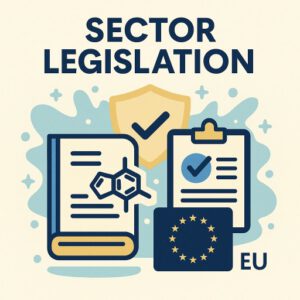Chemicals Sector Legislation in the European Union

For companies placing and making chemical products available on the EU market, the cornerstone legislation consists of the REACH Regulation (EC No 1907/2006) and the CLP Regulation (EC No 1272/2008). However, these are not the only legal acts that define responsibilities. Obligations may also arise from related areas such as environmental protection, occupational health and safety (OHS), waste management, and laws related to the implementation of the European Green Deal.
Since many legal acts are interconnected, a wider perspective is necessary—not only on regulations directly related to chemicals, but also on adjacent legislation. Monitoring updates across the entire spectrum of sectoral and related legal frameworks is critical for ensuring full compliance.
Examples of Cross-Legislative Impact
For example, the development of the Digital Product Passport intersects with several legal revisions:
- Revision of the Detergent Regulation
- Revision of the CLP Regulation
- Directive on Green Claims
- Eco-design requirements
- Waste Framework Regulation
Similarly, the CLP Regulation indirectly affects the following areas:
- Biocidal product legislation
- REACH obligations
- Transport of dangerous goods
- Product safety and eco-design regulations
- Workplace health and safety
Impact Across the Supply Chain
Recent updates to regulations impose additional responsibilities on all entities throughout the entire supply chain. This means that regulatory duties now apply not only to manufacturers and importers, but also to downstream users and distributors placing substances, mixtures, and chemical products on the EU market.
Adapting to Evolving Legislation
Understanding the interconnections between different legal acts is essential. Adapting to the evolving regulatory landscape is becoming increasingly complex for chemical industry stakeholders. A holistic view of chemicals sector legislation is more important than ever.